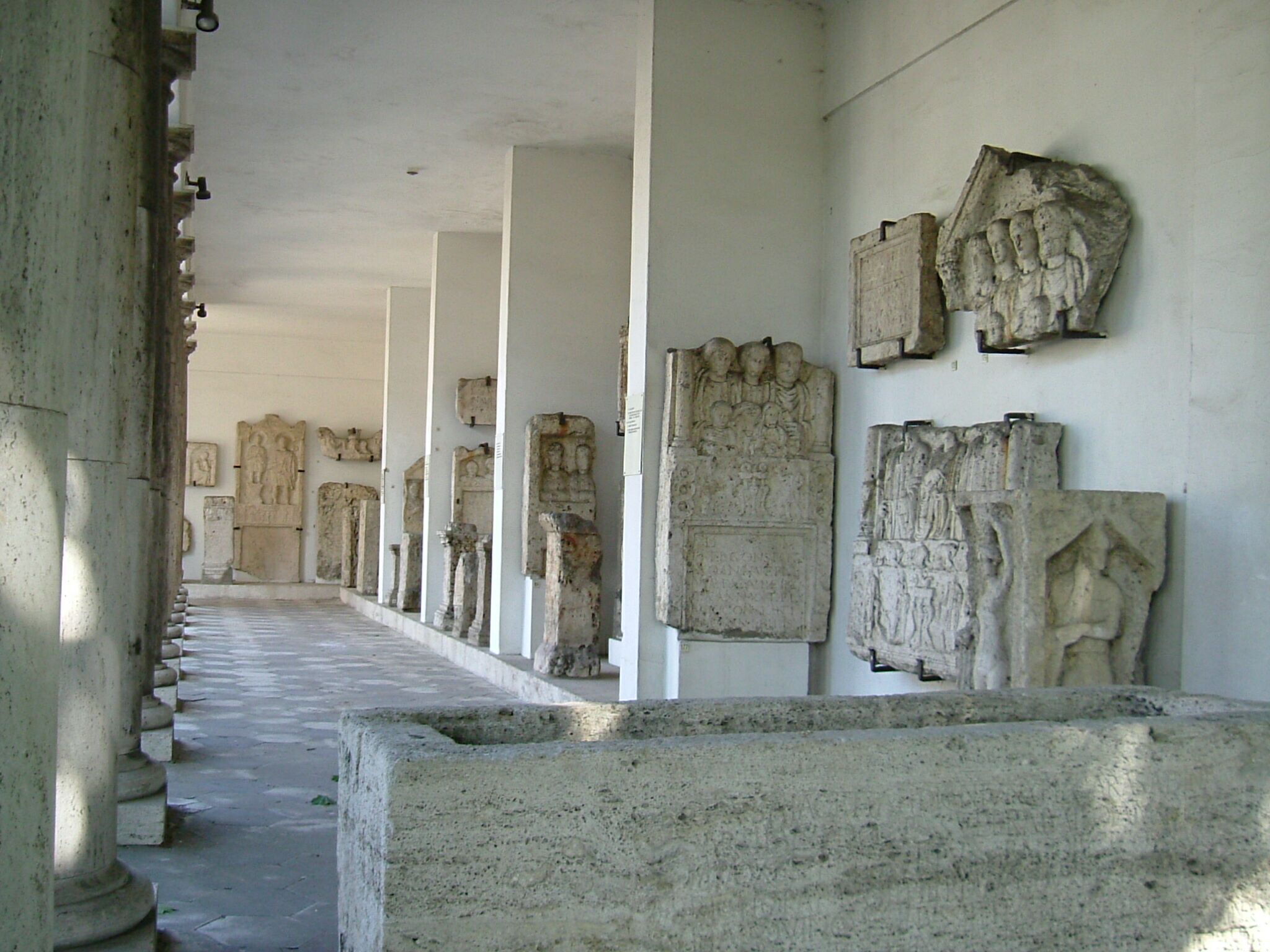Lapidarium on:
[Wikipedia]
[Google]
[Amazon]

 A lapidarium is a place where stone (Latin: ) monuments and fragments of archaeological interest are exhibited.
They can include stone epigraphs; statues; architectural elements such as columns,
A lapidarium is a place where stone (Latin: ) monuments and fragments of archaeological interest are exhibited.
They can include stone epigraphs; statues; architectural elements such as columns,

cornice
In architecture, a cornice (from the Italian ''cornice'' meaning "ledge") is generally any horizontal decorative moulding that crowns a building or furniture element—for example, the cornice over a door or window, around the top edge of a ...
s, and acroterion
An acroterion, acroterium, or akroteria is an architectural ornament placed on a flat pedestal called the ''acroter'' or plinth, and mounted at the apex or corner of the pediment of a building in the classical style. An acroterion placed at ...
s; bas relief
Relief is a sculptural method in which the sculpted pieces are bonded to a solid background of the same material. The term ''relief'' is from the Latin verb ''relevo'', to raise. To create a sculpture in relief is to give the impression that the ...
s, tombstones; and sarcophagi
A sarcophagus (plural sarcophagi or sarcophaguses) is a box-like funeral receptacle for a corpse, most commonly carved in stone, and usually displayed above ground, though it may also be buried. The word ''sarcophagus'' comes from the Greek ...
.
Such collections are often displayed in the outdoor courtyards of archaeology museum
An archaeology museum is a museum that specializes in the display of archaeological
Types
Many archaeology museum are in the open air, such as the Ancient Agora of Athens and the Roman Forum. Others display artifacts inside buildings, such as ...
s and history museum
A museum ( ; plural museums or, rarely, musea) is a building or institution that cares for and displays a collection of artifacts and other objects of artistic, cultural, historical, or scientific importance. Many public museums make th ...
s.
A lapidary museum could either be a lapidarium or – less often – a gem museum (e.g. the Mineral and Lapidary Museum, North Carolina).
Examples
* TheLapidarium
A lapidarium is a place where stone (Latin: ) monuments and fragments of archaeological interest are exhibited.
They can include stone epigraphs; statues; architectural elements such as columns, cornices, and acroterions; bas reliefs, tombsto ...
(in the National Museum
A national museum is a museum maintained and funded by a national government. In many countries it denotes a museum run by the central government, while other museums are run by regional or local governments. In other countries a much greater numb ...
), Prague, Czechia
* The Lapidarium
A lapidarium is a place where stone (Latin: ) monuments and fragments of archaeological interest are exhibited.
They can include stone epigraphs; statues; architectural elements such as columns, cornices, and acroterions; bas reliefs, tombsto ...
, Kerch
Kerch ( uk, Керч; russian: Керчь, ; Old East Slavic: Кърчевъ; Ancient Greek: , ''Pantikápaion''; Medieval Greek: ''Bosporos''; crh, , ; tr, Kerç) is a city of regional significance on the Kerch Peninsula in the east of t ...
, Crimea
* The Lapidarium of Kings
The Lapidarium of Kings (''Kongernes Lapidarium'') is a lapidarium in Copenhagen, Denmark. It exhibits a royal collection of
sculptures, natural stone figures and plaster models.
The museum is situated in the 400 year old brewhouse of King C ...
, Copenhagen, Denmark
* The (museum-lapidarium of Maffei), Verona, Italy
* The Lapidary Museum, Avignon, France
* The Estense Lapidary Museum
The Estense Lapidary Museum is a lapidarium-museum in Modena, Italy, located around the interior quadrangle of the ''Palazzo dei Musei's'' ground floor. It is owned by the province of Modena and the Gallerie Estensi. As the first public museum to ...
, Modena, Italy
* Split Archaeological Museum
The Split Archaeological Museum is the oldest museum in Croatia when it was established in 1820 by a decree of the Dalmatian government in Zadar. Some 150,000 artifacts cover prehistoric times, the period of Greek colonization of the Adriatic, R ...
See also
* Aglyptotheque
A glyptotheque is a collection of sculptures. It is part of the name of several museums and art galleries.
The designation glyptotheque was coined by the librarian of King Ludwig I of Bavaria, derived from the Ancient Greek verb ''glyphein'' (Π...
, a sculpture museum, usually stone sculptures
References
External links
* {{museum-stub